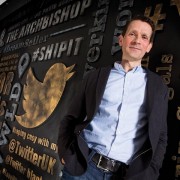NASA’s Return to The Moon
NASA’s Chief Technologist, Dr. Douglas Terrier, was part of the Dublin Tech Summit Virtual 2021 with a live Q&A addressing NASA’s Artemis programme that will return humans to the moon for a sustainable presence and eventually lead on to Mars.
NASA is responsible for exploring everything from the surface of the Earth to the extent of the observable universe, which is 10 to 24 million kilometres in distance, and about 14 billion years old in terms of time. In low-Earth orbit, humans have already been living and working together for over 20 years on the International Space Station. On board the ISS, thousands of experiments that benefit the exploration of life on Earth have already been conducted.
The next step for NASA is to return “to the Moon for a sustainable stay, to live and work in that environment for long periods and to create an environment on the Moon where you can utilise the resources, for not just living and working on the Moon, but eventually to provide an outpost for potentially fueling missions and staging posts for missions even beyond the lunar vicinity.”
Why to the Moon in the first place?
- NASA intend to establish a strategic presence in cislunar space, which is the space around the Earth and its Moon system, for the United States and its allies.
- The Moon is really a staging post, to demonstrate new technologies, capabilities, and business approaches needed for future exploration including Mars.
- Extending the global economic impact. Not just in the investments of Nation States but in creating opportunities for commercial endeavours in Space that will provide untold economic impact.
Artemis
There are key stages of the Artemis programme which “will be a stepwise effort where each stage builds on the previous to lead us to the eventual Human presence on the surface of the Moon.” NASA is currently engaged in a “series of small robotic landers that are going to be doing the prospecting on the surface of the Moon. That will be primarily commercially led efforts to identify landing sites to prospect for resources and to map out all the resources that are needed when Humans arrive in a few years.” said Dr. Douglas Terrier.
Artemis flight
Dr. Douglas Terrier explained that NASA will begin with an Artemis first flight of the all-up configuration later this year which will be the first time that NASA has sent a spacecraft to the Moon in decades. The impact of the furthest route travelling by Human class spacecraft, goes beyond in Human history. The Artemis flight will be followed by the Artemis two which will be the first crude flight and will circumnavigate the Moon, followed by Artemis three which will be the actual first excursion to the lunar surface.
Artemis architecture
NASA’s Space Launch System (SLS), which will send astronauts aboard the Orion spacecraft nearly a quarter million miles from Earth to lunar orbit. Astronauts will dock Orion at the Gateway and transfer to a Human landing system for expeditions to the surface of the Moon.
Gateway system:
The gateway will orbit the Moon in a specific orbit that provides us a platform from which we can rendezvous and do our transits down to the surface and back up from the surface. This gateway will also form a node from which we can conduct additional missions further into the solar system.
Space Launch System:
The used rocket is the “Space Launch System” which is the largest rocket Humanity has ever conceived. “This vehicle is larger than the Apollo Saturn V, more capable and more powerful and has already undergone a successful core stage test this year.” added Dr. Douglas Terrier.
Orion Spacecraft
The Orion spacecraft is the command module that will house the crew and transport them to the Moon and safely back to Earth.
One of the big challenges of the Artemis programme
According to Douglas Terrier, it will be, “to learn how to live and work and to utilise the environment around us to create the commodities that we need to to survive on the surface for long periods of time, as we look to go back to the Moon for a sustainable stay and eventually come to Mars.” However,Dr. Doctor Douglas Terrier is confident that NASA will overcome those challenges with the global participation and collaboration of scientists and engineers and inventors from around the globe!
You can watch the talk here.
DTS will return to Dublin in 2022. Sign up now for our special ticket offers here









